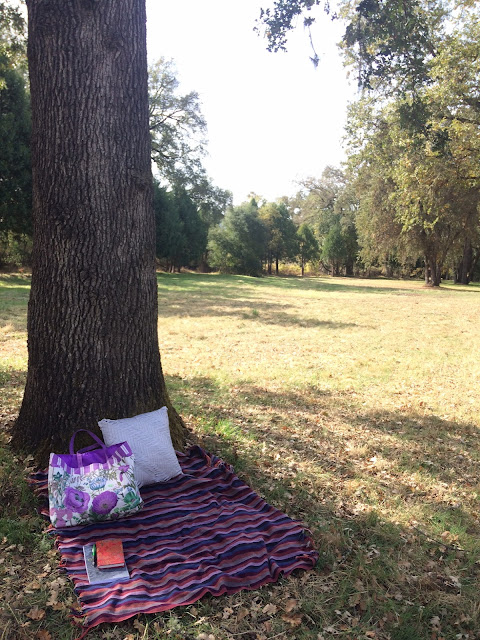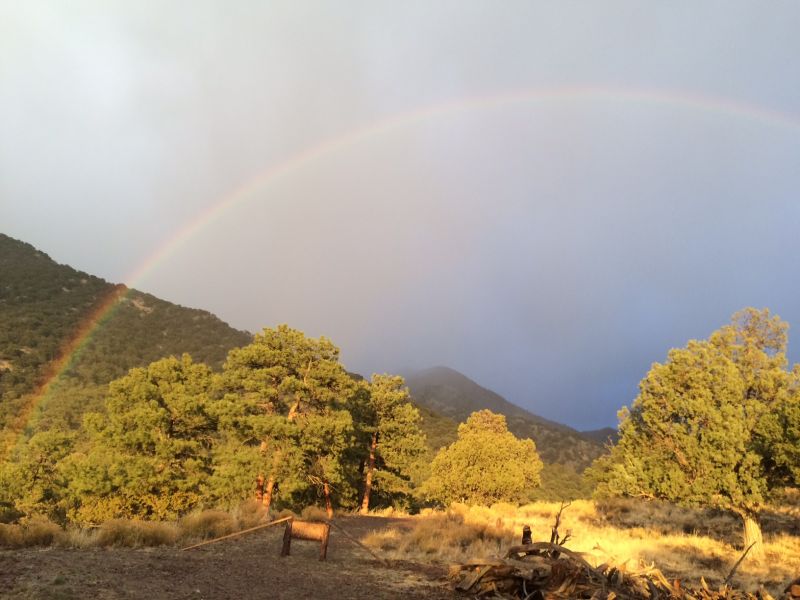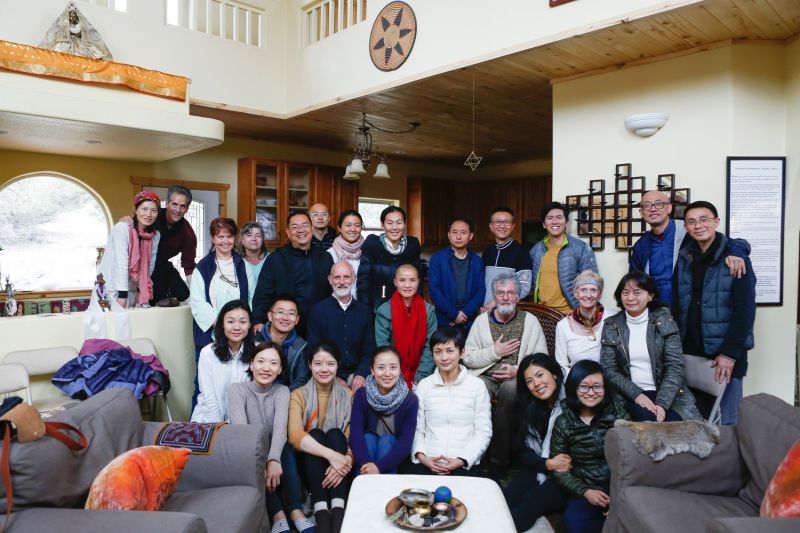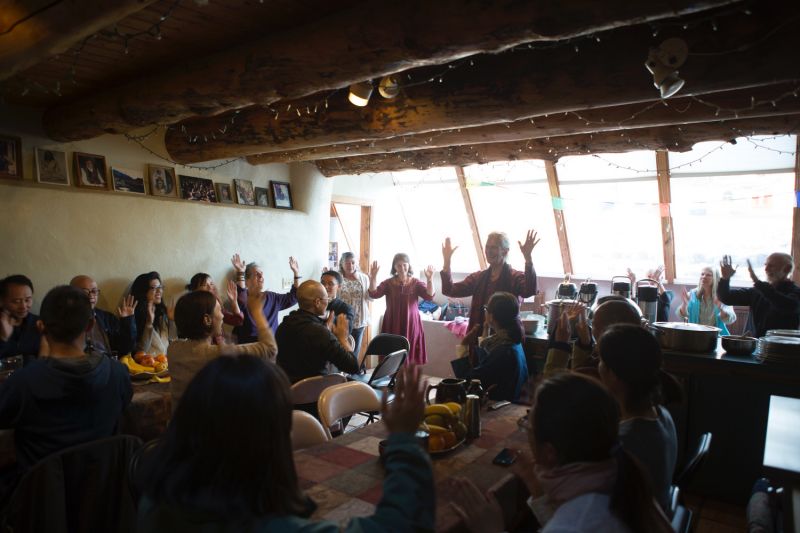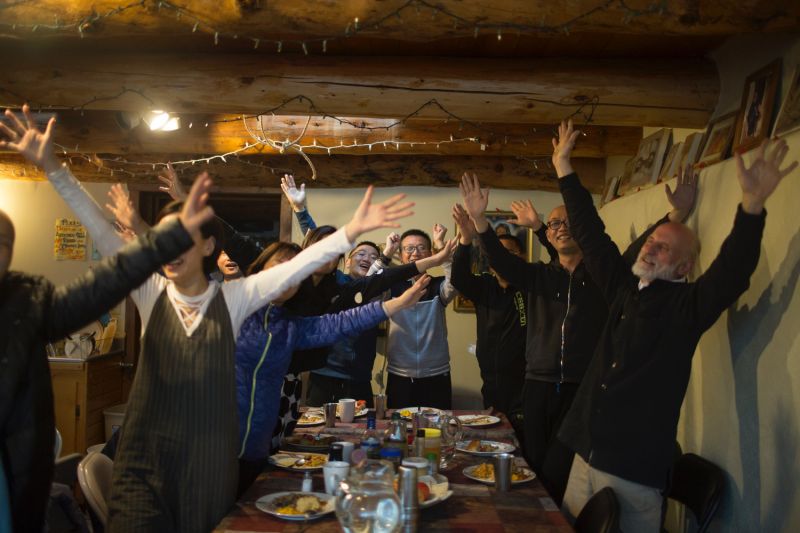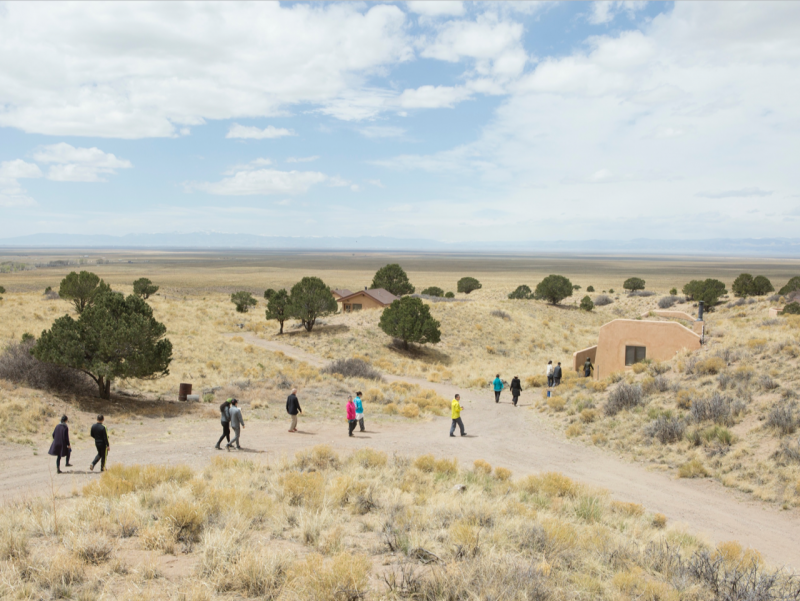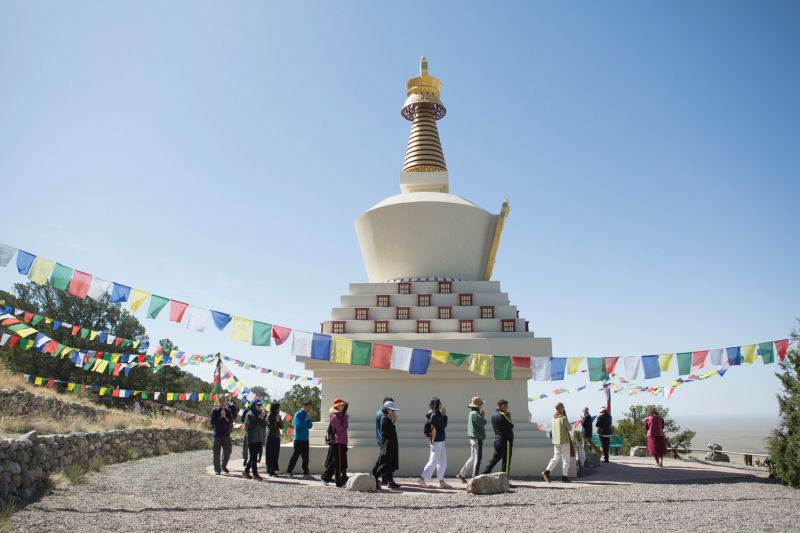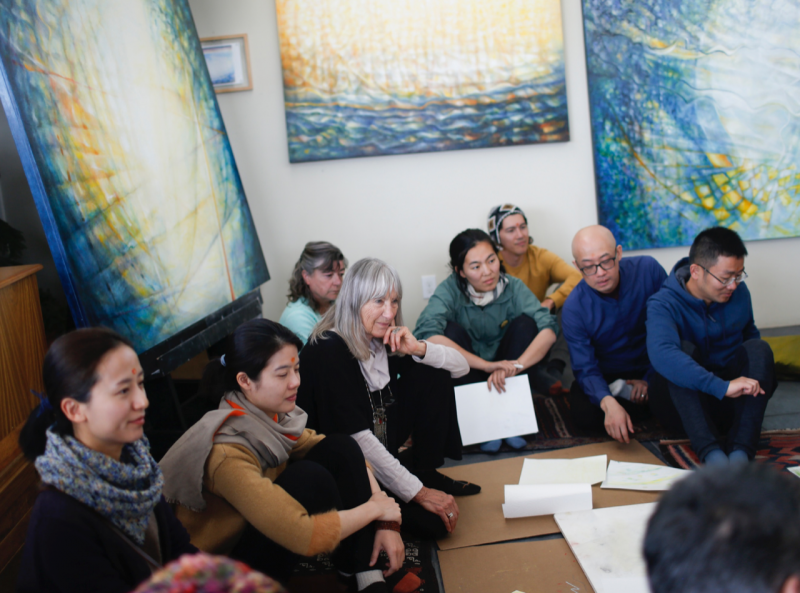During the couple of weeks leading to the Guan Yin retreat, I took it seriously to prepare, mentally and emotionally. I made up my mind to do the noble silence, meaning no texting, no phone call, and no talking. I sent out emails to tie up loose ends, made calls to finish the unfinished conversations, and said my temporary goodbyes and delayed apologies. In a sense, it was a bit like preparing for my upcoming “death” on a tiny scale, so that I could enter the session with a less distracted mind. The video call with my parents in China was the grand finale of this pre-Guanyin preparation. My mother was especially supportive and said she would recite Guanyin’s name in China too. In the first two days in the session, my attention was on sending prayers to my father who is suffering from the late stage Parkinson’s Disease, and my mother who is the 24/7 caregiver of my father, and who has led a life serving her family since she was about 8 years old. If I had any merits and virtue through my cultivation, I would like to offer them first to my parents, who made this physical life of mine possible. I even brought their photo with me and put it in my pocket during the session in the Buddha Hall. It was comforting to feel their presence with me.
Guan Yin’s Name Transforms Afflictions
As I turned attention to my own inner process, what surprised me was that I uncovered some bitterness underneath my kind persona toward others, no matter how subtle that bitterness may be on the outside. For example, in a very subtle way, I judged those who took too much food (I do that myself), thinking they were greedy; I felt bothered by those who walked at their own pace despite the big gap between her and the person before her during walking recitation, thinking they were arrogant. What’s worse, I had to face again my ongoing jealousy of different people throughout my life. Watching my own judging and comparing mind, it felt like I was living in a house, with energy constantly leaking out. Imagine all the energy that I could’ve saved from false thinking and fault-finding! These ongoing afflictions, though seemingly subtle, really became big obstacles in my cultivation. Without grasping or resisting, I would not be carried off easily by those afflictions, if I focus on reciting Guanyin’s name. If I recite Guan Yin’s name from my dantian--the source of my qi--continuously, I could evoke the four qualities of Guan Yin Bodhisattva from the source within me: kindness, compassion, joy, and giving.
With these intentions, I recited, and recited, and I began to see that every fault I found in others, I have or had in me. When I grasped the external objects, the faults or strengths in others became amplified, and I became attached to those amplified focus points, and no longer see the whole truth. I began to see again my own faults throughout my life, harming those around me out of my own suffering from shame, insecurity, fear, pride, low self-esteem, prejudice, resentment, selfishness, and more. We seem to harm each other when our suffering inside overflows. Transforming my own afflictions could be my best service to the world. In the text of the Sixth Patriarch (Huineng), there are many lines pointing to these habitual afflictions and the way to break free and transform, “affliction is itself bodhi...obstacles of their wrong views are formidable and the roots of their afflictions go deep...when you contemplate and illuminate with a wisdom that clearly penetrates both inside and outside, you can discern your original mind. Recognizing your original mind is the fundamental liberation.”
Repentance and Renewal
During the walking recitation, some memories came to me. Two years ago, when I visited my parents in China, my father wanted to play pingpong. I said I would take him, but no other family member believed that he could still play. I pushed him in a wheelchair to the pingpong place. I helped him get out of the wheelchair, and he stood by the pingpong table with one hand holding onto the table to keep himself steady, the other hand hitting the ball. He was still so good! I could barely keep up with him. It was like a miracle! And he was tireless. After two decades of being physically disabled, I forgot to think how much he wanted to move and live like a normal person. Then the next day, the same time, he wanted to go again. He was so alive in those two days! But on the third day, when he knocked on my door as I was taking a noon rest, I felt tired and didn’t want to go. After a while, when I came out of my room, he was gone. He walked himself to the pingpong place by pushing his own wheelchair! When I found him, I let out my complaints of him walking out on his own. After that day, he never came out to play pingpong again. His condition instantly become worse. But what happened in those two days? Maybe he was happy that finally someone believed in him and accompanied him to do what he used to love to do? There is no room for me to go into the details for the complicated reason why I didn’t want to go with him on the third day. But oh, my heart ached greatly during the walking recitation, especially when I thought of my unkind words toward him on that third day. Tears brought out more incidents in my life when I let down someone, hurt someone, or didn’t care. One after another, each hit me back hard.
“Na Mo Guan Shi Yin Pu Sa. Na Mo Guan Shi Yin Pu Sa. Na Mo Guan Shi Yin Pu Sa....” I continued to chant with hundreds of others. Na Mo (or Namo) means homage (the same root as Namaste), bowing with the highest respect. Guan Shi Yin is the longer version of Guan Yin, or Kwan Yin (the Goddess of Great Compassion), and it literally means listening to or contemplating the cries of the world. Pu Sa means bodhisattva, (in Mahayana Buddhism) a person who is able to reach nirvana but delays doing so out of compassion in order to save suffering beings.
But without making the vow not to make the same mistakes again, repentance doesn’t stop the future cycle of the same suffering. I’m still continuously repeating the same patterns of harming others and hurting myself. The same habitual patterns over and over, even if I’ve been repenting for some years. From this moment on, I need to catch all my negative thoughts towards others before they could go out to do harm to anyone. The Sixth Patriarch emphasized both repentance and renewal. He explained that “to renew” means “to turn back from such wrongs; it means from now on you have awakened to the stupidity, confusion, arrogance, deceit, jealousy, envy and other unwholesome tendencies, have reversed course and will never revert to them again.” I now understand that to repent is not easy, but to renew is even harder. To repent is to see deeply our wrong doings without guilt or shame, and to renew is to turn back from all wrong doings and never revert to them again. Renewal definitely needs some serious cultivation before it can be done!
Sit spot
After five days of reciting, repenting, lots of tears, noble silence, and only two meals a day (no dinner), I could no longer ground myself in the Buddha Hall on the sixth day. I needed to play hooky. I walked to survey the land after the morning recitation and the sitting. During the afternoon session, I grabbed my knitting work, a book on The Way of Tea, and walked to my new found sit spot in the woods with a very light heart. Once I walked into that open space, it felt like I walked into a wonderland with the perfect sunlight, the different shades of green, the blue sky and moving white clouds, birds chirping, squirrels running, and even wild turkeys. I completely surrendered myself to the magical colors and the serenity around me. I put down my sit cloth and a back cushion against the tree that I chose and sat down comfortably. I recited Na Mo Guan Shi Yin Pu Sa and a sense peace and joy stayed with me for a long time. Reading about the tea as the way of life also helped me see beauty in all seemingly mundane moments and trivial details. I experienced such great contentment and peace that I’d never experienced before. All the heaviness of being a human was all gone. No more worries or concerns, no more judgements or feeling of lacking, only peaceful joy. I could only think of two words to describe that place and that state, “paradise” and “magical.” I found paradise at CTTB! The world outside that “paradise” seemed a whole different one.
Restrengthening the Bodhisattva Vow
When I returned to the Buddha Hall later, all the heaviness of being a human seemed to come back to me again. I missed that peaceful joy I experienced in Nature alone. The chanting, the walking, the bows stopped making sense, because I wanted to go back to that “paradise,” not here. I don’t feel free here. What happened? I wanted to be free from all this heaviness: confusion, doubt, fear.... Have I been “misled” by wai dao, and now I could no longer recognize Buddha Dharma? What’s going on? I don’t remember how long it took me to re-settle before it dawned on me what Bodhisattva vow really meant. Do I really want to continue to stay with that peace and joy that I experienced in the woods alone, without being bothered by this human world? The Sixth Patriarch says, “The Buddha Dharma is right here in the world, there is no awakening apart from this world; to search for Bodhi somewhere beyond this world, is like looking for a rabbit with antlers.” But was my being in the woods apart from this world? No. And it didn’t feel like a dull emptiness either. And I do want to continue to have that state as I walk in the Buddha Hall, or talk to people, or do anything in my daily life. I don’t think I want that state without the humans “bothering” me in this entire life. As a human, I intuitively know that I need to stay in this human world to cultivate, not leaving it “behind.” But how can I integrate that peace and joy inside while living this “heavy” human life, which is often afflicted? Then I understood that taking the Bodhisattva path is not a small thing!
After five days of reciting, repenting, lots of tears, noble silence, and only two meals a day (no dinner), I could no longer ground myself in the Buddha Hall on the sixth day. I needed to play hooky. I walked to survey the land after the morning recitation and the sitting. During the afternoon session, I grabbed my knitting work, a book on The Way of Tea, and walked to my new found sit spot in the woods with a very light heart. Once I walked into that open space, it felt like I walked into a wonderland with the perfect sunlight, the different shades of green, the blue sky and moving white clouds, birds chirping, squirrels running, and even wild turkeys. I completely surrendered myself to the magical colors and the serenity around me. I put down my sit cloth and a back cushion against the tree that I chose and sat down comfortably. I recited Na Mo Guan Shi Yin Pu Sa and a sense peace and joy stayed with me for a long time. Reading about the tea as the way of life also helped me see beauty in all seemingly mundane moments and trivial details. I experienced such great contentment and peace that I’d never experienced before. All the heaviness of being a human was all gone. No more worries or concerns, no more judgements or feeling of lacking, only peaceful joy. I could only think of two words to describe that place and that state, “paradise” and “magical.” I found paradise at CTTB! The world outside that “paradise” seemed a whole different one.
Restrengthening the Bodhisattva Vow
When I returned to the Buddha Hall later, all the heaviness of being a human seemed to come back to me again. I missed that peaceful joy I experienced in Nature alone. The chanting, the walking, the bows stopped making sense, because I wanted to go back to that “paradise,” not here. I don’t feel free here. What happened? I wanted to be free from all this heaviness: confusion, doubt, fear.... Have I been “misled” by wai dao, and now I could no longer recognize Buddha Dharma? What’s going on? I don’t remember how long it took me to re-settle before it dawned on me what Bodhisattva vow really meant. Do I really want to continue to stay with that peace and joy that I experienced in the woods alone, without being bothered by this human world? The Sixth Patriarch says, “The Buddha Dharma is right here in the world, there is no awakening apart from this world; to search for Bodhi somewhere beyond this world, is like looking for a rabbit with antlers.” But was my being in the woods apart from this world? No. And it didn’t feel like a dull emptiness either. And I do want to continue to have that state as I walk in the Buddha Hall, or talk to people, or do anything in my daily life. I don’t think I want that state without the humans “bothering” me in this entire life. As a human, I intuitively know that I need to stay in this human world to cultivate, not leaving it “behind.” But how can I integrate that peace and joy inside while living this “heavy” human life, which is often afflicted? Then I understood that taking the Bodhisattva path is not a small thing!
My First Test After Guan Yin Session
Right after the Guan Yin session, I called my family again after my brother sent me a message, “Miss you.” But at the end, when my brother began talking like a tape recorder repeating what he’s been repeating for years that I should be able to support myself financially; I don’t have a good retirement plan; I’m not even contributing to society. My body became tensed up again and great frustration overtook me that I had to say “I’ve got to go” and hang up. I thought that I had had such a profound retreat and felt I was at the peak of my deep spiritual journey, and then my brother ruined everything for me! Great job, bro! I so wanted to send my brother a message, saying,
“How many times do I have to tell you that I’m doing fine. I’m making my conscious choices to live a life as such, and I’m happy. I don’t need anyone to worry about me. Everything you said is exactly what I don’t want to hear. But you continue to repeat the same nonsense to me! Why? You are wasting my time! Tell you what! The life you live, I’ve seen it and lived it, and I know it all; but the world that I see now is the world that you don’t know, but I hope one day you will know. It’s beyond everything you know now! It’s beyond language. If you don’t know about it, then don’t express your opinion on it! Do you know? When I talk to Baba and Mama without you being there, we three often have such a joyful and deep conversation. So wonderful! But whenever you are around, the conversation becomes dull, superficial, and meaningless. I wish I didn’t have anything to do with you sometimes. This is the last time I’m saying these things to you. After this, we will only talk about parents and your son Weiwei, nothing else. That’s it. You’ll never understand it. But that’s fine. I give up. You’ll live your life; I’ll live mine. Good luck, brother!”
I’m so glad that I didn’t send the message above because ten minutes later, my brother sent me a message apologizing: Sister, have an early rest today. Gege (older brother in Chinese) didn’t know how to speak properly according to the situation. I just hope my sister’s life will be a secure one. Live happily, eat well, and take care of the body, which is the foundation of everything. (three red heart symbols).
Earlier Gege commented over the call that I was even more skinnier than the last time he saw me. He thinks that I’m not eating enough nutrients because of my vegetarian diet. After reading the message, I cried. I have such a loving brother, and I was being ungrateful again, constantly defending myself, and expecting him to understand me. Maybe I've failed the first test after Guan Yin session, but I'm grateful for the test.
